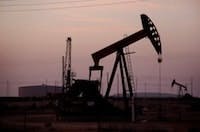Following a public process that included more than 1.5 million public comments, on March 20 Secretary of the Interior Sally Jewell released final standards that will support safe and responsible hydraulic fracturing on public and American Indian lands. The standards will improve safety and help protect groundwater by updating requirements for well-bore integrity, wastewater disposal and public disclosure of chemicals.
There are more than 100,000 oil and gas wells on federally managed lands. Of wells currently being drilled, more than 90% use hydraulic fracturing. The rule applies only to development on public and tribal lands and includes a process so states and tribes may request variances from provisions for which they have an equal or more protective regulation in place. This will avoid duplication while enabling the development of more protective standards by state and tribal governments.
“Current federal well-drilling regulations are more than 30 years old and they simply have not kept pace with the technical complexities of today’s hydraulic fracturing operations,” Jewell said. “This updated and strengthened rule provides a framework of safeguards and disclosure protocols that will allow for the continued responsible development of our federal oil and gas resources. As we continue to offer millions of acres of public lands for conventional and renewable energy production, it is absolutely critical the public have confidence that transparent and effective safety and environmental protections are in place.”
Key components of the rule, which will take effect in 90 days, include:
- Provisions for ensuring the protection of groundwater supplies by requiring a validation of well integrity and strong cement barriers between the wellbore and water zones through which the wellbore passes;
- Increased transparency by requiring companies to publicly disclose chemicals used in hydraulic fracturing to the Bureau of Land Management (BLM) through the website FracFocus, within 30 days of completing fracturing operations;
- Higher standards for interim storage of recovered waste fluids from hydraulic fracturing to mitigate risks to air, water and wildlife;
- Measures to lower the risk of cross-well contamination with chemicals and fluids used in the fracturing operation, by requiring companies to submit more detailed information on the geology, depth and location of preexisting wells to afford the BLM an opportunity to better evaluate and manage unique site characteristics.
“This rule will protect public health and the environment during and after hydraulic fracturing operations at a modest cost while both respecting the work previously done by the industry, the states and the tribes and promoting the adoption of more protective standards across the country,” said Assistant Secretary for Land and Minerals Management Janice Schneider. “It will be implemented in the most efficient way possible to avoid duplication or unnecessary activities by industry, other regulators or BLM staff. We know how important it is to get this right.”
The new rule is the culmination of four years of public involvement to bring onshore oil and gas drilling regulations into the 21st century. The BLM published both a draft rule and a supplemental draft rule, held regional forums and stakeholder meetings on the proposal and reviewed more than 1.5 million public comments.
BLM staff studied state and tribal regulations and consulted with state and tribal regulators, industry, environmental experts and the public, including communities affected by oil and gas operations. In many instances, provisions in the new rule are similar to or based on existing state or tribal rules and industry best practices. The result of this careful consultation is a rule that will enhance environmental protection in a thoughtful and cost-effective way. BLM estimates the new rule will cost less than one-fourth of 1% of the cost of drilling a well, based on the Energy Information Administration’s average per well cost of $5.4 million.
The BLM oversees about 700 million subsurface acres of federal mineral estate and carries out regulatory duties of the Secretary of the Interior for an additional 56 million acres of Indian mineral estate across the U.S. The Indian Mineral Leasing Act and other laws require that Indian lands and communities have the same protections as U.S. public lands.
Source: U.S. Department of the Interior


